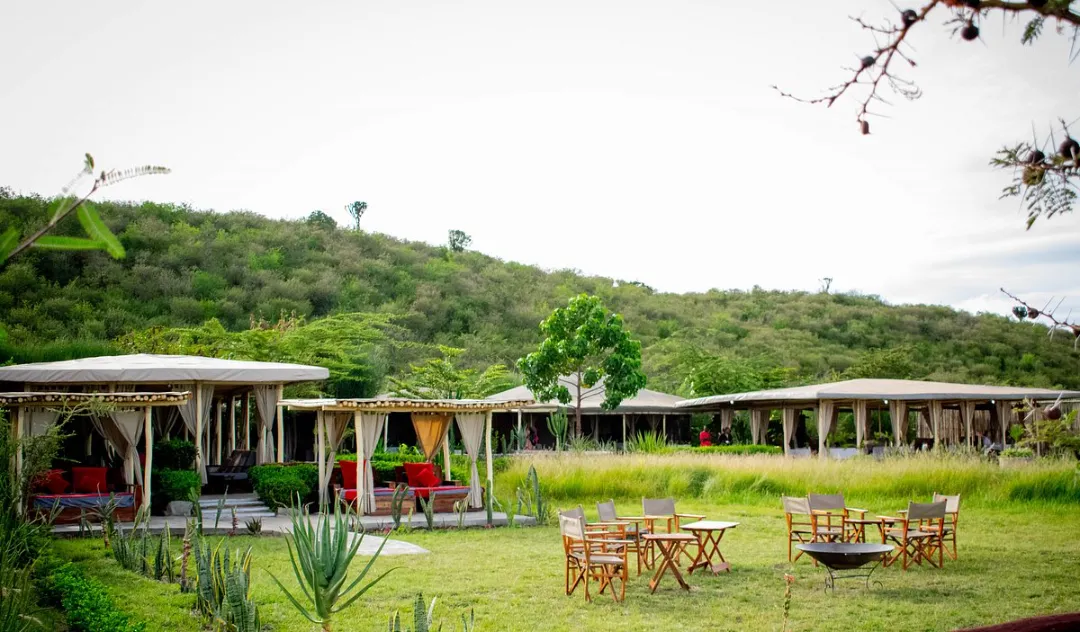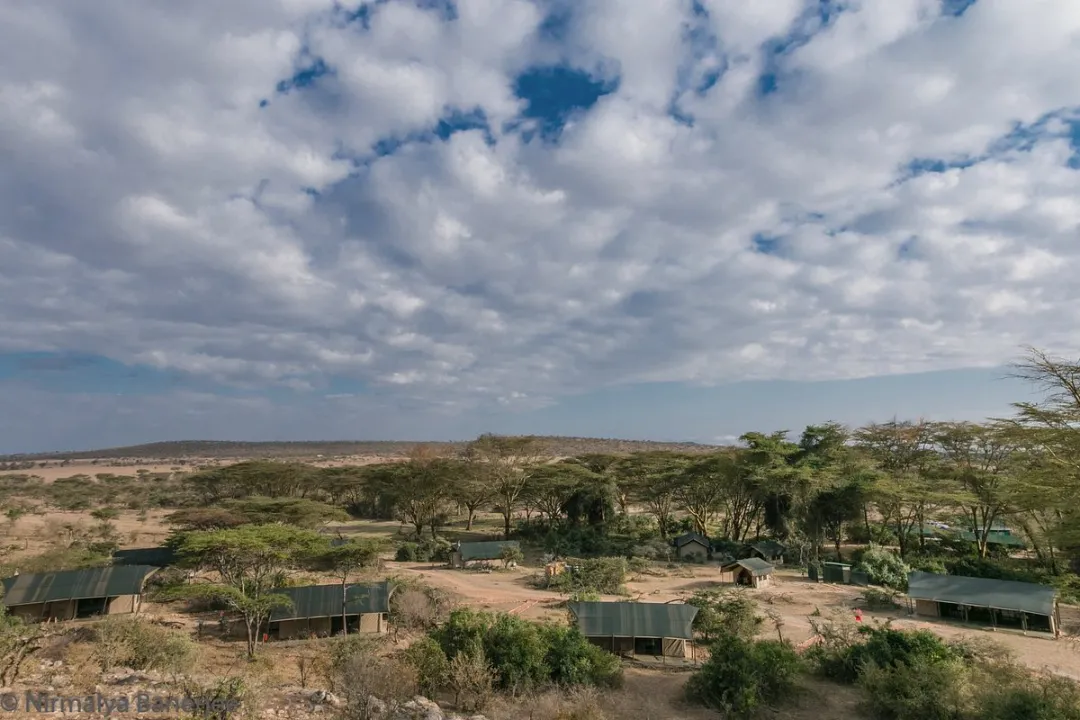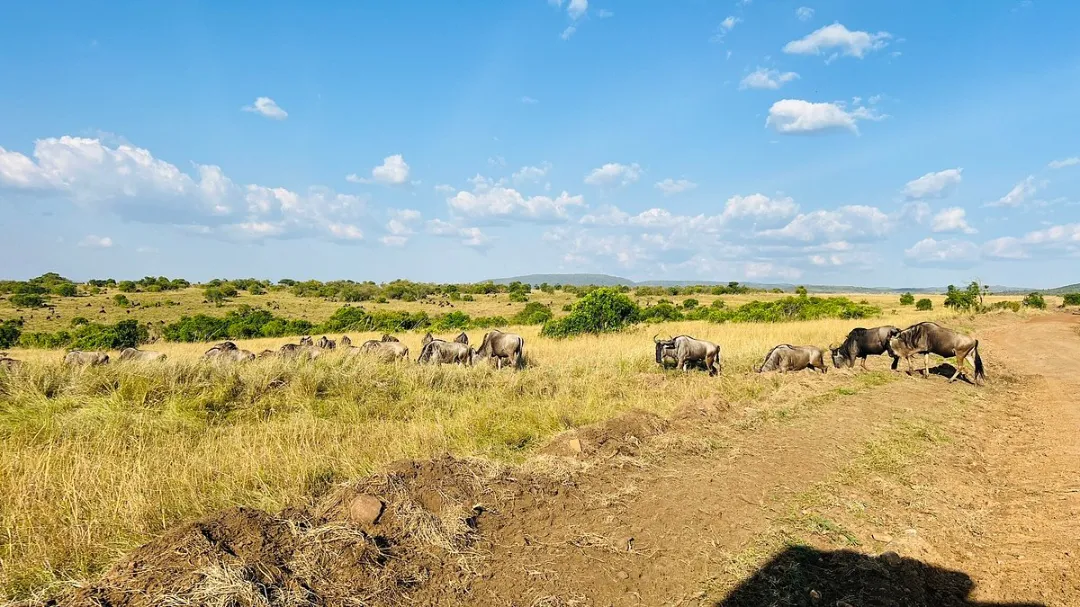Best Time to Visit Masai Mara for an Unforgettable Safari Experience

The best time to visit the Masai Mara is from June to October for amazing game viewing, including the Great Wildebeest Migration. For a quieter experience, consider the Green Season from March to May, a time filled with newborn animals and lush scenery.
Between July and October, the Masai Mara hosts the Great Migration. Over a million wildebeest migrate from the Serengeti to the Maasai Mara, seeking greener pastures driven by the rains. The Masai Mara migration includes the Mara River crossings, where wildebeests brave crocodile-infested waters, which are a bucket-list experience.
The dry season from June to October makes wildlife spotting easier due to sparse vegetation. Early morning game drives reveal a wealth of wildlife, from elephants to big cats. First-time visitors and seasoned safari-goers alike will find this period ideal for an unparalleled adventure.
Witnessing the Great Migration

One of the most awe-inspiring events in the animal kingdom is the Great Migration. Over a million wildebeest, zebras, and gazelles embark on a treacherous journey from Serengeti National Park to the Masai Mara as the great wildebeest migration unfolds. Driven by the search for fresh grazing, this epic migration typically starts in mid-July and continues through late August.
One of the highlight of the Great migration is the famed mara river crossings. From late July to September, wildebeests face the perilous task of crossing the crocodile-infested Mara River during the mara crossing. These crossings test the wildebeests’ survival and offer prime hunting opportunities for predators, making for intense game viewing.
Visiting during the Great Migration ensures an action-packed safari. Thousands of animals moving in unison across the plains of the Maasai Mara showcase the raw beauty and power of nature. To witness this spectacle, plan your trip between mid-July and late August.
Lion Season in Masai Mara
This season in the Maasai Mara occurs from January to March. Shorter grasses during this period make it easier to spot majestic lion prides. Reduced cover makes prey animals more visible, leading to frequent predator-prey interactions and enhancing game viewing.
Expect to see lion prides in their full glory, often with cubs, during the Season. This season offers excellent opportunities to photograph wild cats as they bask in the sun or engage in social behaviors. Clear visibility and concentrated wildlife make it an ideal time for lion observation.
Fewer tourists during Lion Season provide a more intimate and exclusive safari experience. The combination of excellent wildlife visibility and fewer visitors makes January to March a hidden gem for safari enthusiasts.
Green/Rainy/Wet Season Safari Adventures

From March through May, the wet Season transforms the Maasai Mara into a lush, green paradise. Marked by significant rainfall and increased humidity, this period is often referred to as the low season for safari travel. However, it offers unique advantages that can make your visit equally rewarding. The Masai Mara experiences two rainy seasons, and this time of year is part of the long rains, contributing to the vibrant landscape and abundant wildlife activity.
Wildlife activity peaks during the Wet Season, with many animals giving birth. Newborn animals, from playful lion cubs to wobbly wildebeest calves, add a heartwarming dimension to your safari. Photographers will find dramatic cloud formations and clear air perfect for capturing stunning images. Additionally, this season attracts a variety of migrant birds, making it a prime time for bird watching enthusiasts.
Reduced tourist numbers during the Green Season allow for a more intimate experience of the Masai Mara’s wilderness. Private conservancies offer additional perks like night game drives and less-frequented areas. Though less popular, the Wet Season has its own magic. When you visit Kenya during this time, you can enjoy a serene and enriching safari experience.
Comparing Dry and Rainy Seasons
The Masai Mara has two distinct weather patterns: dry and rainy seasons. The dry season from June to October is ideal for wildlife visibility. Sparse vegetation concentrates animals around water sources, making them easier to spot. The absence of insects like mosquitoes also makes for a more comfortable safari experience.
In contrast, the rainy season, especially in March, April, November, and December, brings increased rainfall and greener landscapes. While beautiful, the lush environment means animals disperse into the bush, making sightings more challenging. Wet weather can lead to muddy terrain, impacting road conditions and vehicle accessibility during the rainy season.
Despite these challenges, the wet season is crucial for the Great Migration. The annual Great Migration is driven by the search for greener pastures, influenced by rainfall patterns. Understanding the unique experiences each season offers can help you plan the ideal time to visit the Masai Mara based on your preferences.
Best Spots for Wildlife Viewing
The Masai Mara National Reserve and surrounding conservancies offer some of Africa’s best game viewing spots. In the dry season, wildlife concentrates near water sources, enhancing chances of spotting a diverse range of animals. The Eluai Plain, known for large herds of elephants and zebras, offers excellent wildlife viewing against scenic backdrops of the vast plains.
With an emphasis on conservation, the Masai Mara conservancies offer a quieter safari experience and excellent wildlife viewing. Renowned for well-managed game drives and diverse wildlife, the Mara Triangle is a prime spot for birdwatching and game viewing. Safari vehicles provide convenient access to these areas, ensuring you make the most of your visit to Kenya.
For big cat enthusiasts, the Olare Orok Conservancy offers unique wildlife encounters in a low guest density environment, making it ideal for spotting lions and leopards. The Ol Kinyei Conservancy is also excellent for predator sightings, especially lions and leopards.
The Musiara Swamp near the Mara River is notable for its elephant families and abundant bird life. The Nashulai Maasai Conservancy offers immersive wildlife experiences while supporting local Maasai communities, balancing game viewing and cultural enrichment. The Talek Rivers are another highlight, offering lovely weather and serene landscapes that enhance the safari experience.
Planning Your Visit to Masai Mara
Traveling to the Masai Mara can be done by flight or road. Flights take about 45–60 minutes and are recommended for convenience, especially during the peak season when they can fill up quickly. Alternatively, a scenic road trip typically takes 4-5 hours, offering a different perspective of Kenya’s landscapes.
A well-planned safari itinerary can range from 2 to more than 7 days, with 4-5 days being ideal for thorough exploration. This allows ample time to experience the diverse wildlife, participate in various activities, and fully immerse yourself in the Masai Mara’s beauty.
Packing essentials include neutral-colored clothing, binoculars, and a light rain jacket to be prepared for any weather changes. With careful planning and preparation, your visit to the Masai Mara will be a once-in-a-lifetime adventure filled with unforgettable moments.
Summary
The Mara is a destination that offers something for everyone, from thrilling wildlife encounters during the Great Migration to serene moments during the rainy Season. Whether you visit during the peak season for optimal game viewing or the migration season, the Mara promises an unforgettable safari experience. Plan your visit carefully, choose the right time based on your interests, and prepare for an adventure that will leave you in awe of nature’s grandeur.
Frequently Asked Questions
What is the best time to visit the Masai Mara?
The optimal time to visit the Masai Mara for game viewing is from June to October, as this period aligns with the Great Migration. This natural phenomenon enhances the chances of witnessing diverse animal activities.
What is Lion Season in the Mara?
This season occurs from January to March, marked by shorter grasses that enhance lion visibility and offer exceptional opportunities for predator sightings.
What activities can I do beyond game drives?
You can enhance your experience with activities such as bush walks, bird watching, hot air balloon safaris, visiting local Maasai villages, horseback safaris, and enjoying sundowner experiences. These alternatives provide a unique perspective of the wildlife and culture.
What types of accommodations are available in the Mara?
In the Masai Mara, visitors can choose from luxury lodges, tented camps, mid-range camps, and budget-friendly options, ensuring a suitable accommodation for every preference and budget.
What should I know about visiting Masai Mara during the rainy seasons and dry season?
The Masai Mara experiences two rainy seasons, typically from March to May and November to December. These periods bring lush landscapes and fewer tourists, but they can also affect road conditions and wildlife visibility. In contrast, the dry period, from June to October, offers sparse vegetation that enhances wildlife spotting and provides a more comfortable safari experience. Planning your visit during the rainy seasons can offer a unique and quieter safari experience, while the dry season is ideal for those seeking optimal game viewing.
Welcome to AjKenya Safaris
Thanks for stopping by! We’re excited to help you plan an unforgettable safari.
- Phone: +254 748 258880
- WhatsApp: +254 748 258880
- Email: [email protected]
- Email: [email protected]




